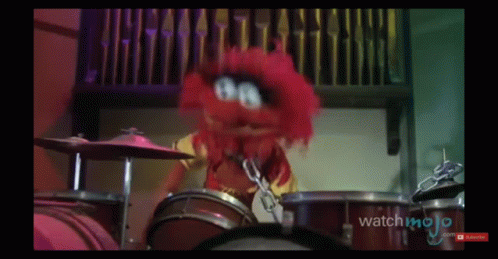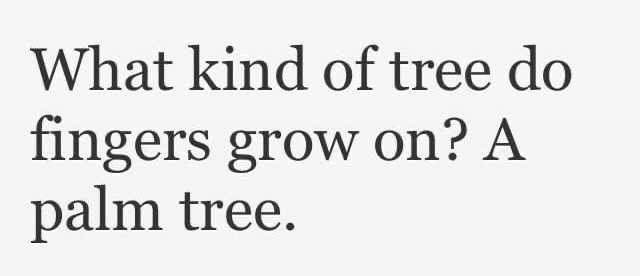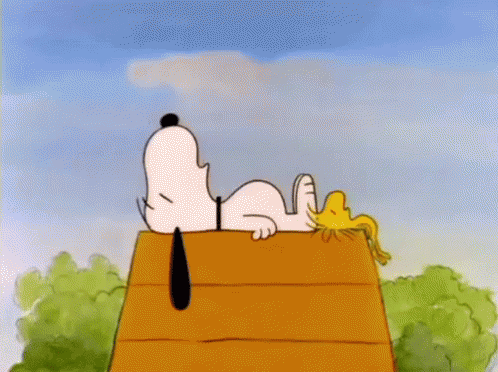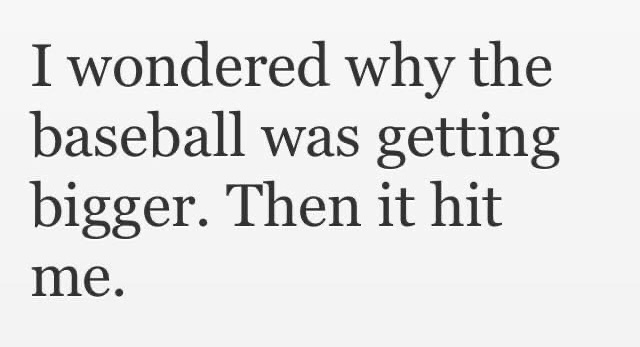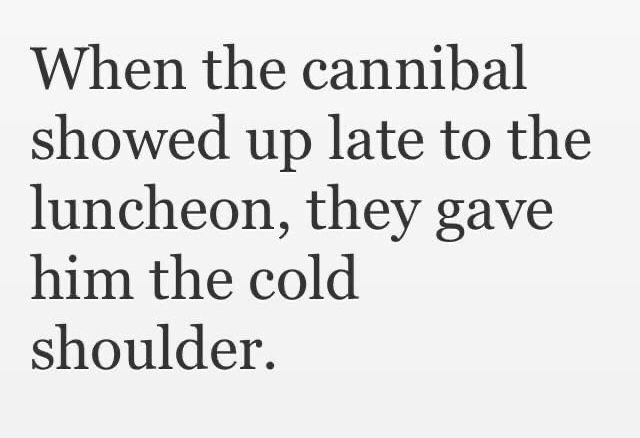Rhythm & Melody
Rhythm is the combination of sound, silence, and meter as a sound without any interruption would simply be a long note. It would have an initial attack and perhaps sustain, however as we’ve covered in a previous lesson, once it goes into the decay phase, it will eventually result in silence as shown in example 1 of the following image.
If you take that same long note and break it up by introducing evenly spaced silences, you now have a series of notes … each with their own attack, sustain, and decay as shown in example 2 of the same image.
Applying meter to the sounds, will introduce more emphasis on some notes and less on others depending on the beat on which each note falls on, which results in different notes with varying volumes, including moments of actual complete silence as shown in example 3.
Visually, this is how it would look:

While clapping out this rhythm would result in steady beats that are evenly spaced apart, there would be obvious volume differences between each beat. The difference in volumes, called dynamics, are what makes the rhythm sound more human since a human cannot control volume so much that every note would consistently be at specific volumes. Although imperfect, this is an important part of ‘feel’ and ‘groove’.
If the rhythm above is being produced through a percussive instrument such as a drum, each note could have it’s own timbre if different parts of the drum are used for each note. For example, the first note can be a bass drum, the second can be a closed high-hat, the third can be a snare, and the fourth can be a closed high-hat once again.
The same above principles can be applied to non percussive instruments of course. Rather than playing different instruments as would be the case for a drum, melodic instruments allow you to change the pitch of the different notes and even sustain notes for longer or shorter periods by using any of the note duration we covered in the previous lesson. The timbre of the instrument would be consistent but the pitches produced by that instrument would vary instead.
When multiple pitches and note duration (including rests) are applied, you have what is called a ‘melody’. Of course, your melody can intentionally be repetitive notes of the same pitch or duration however in that case, the ‘melody’ would be more rhythmic than melodic as ‘melody’ implies that multiple pitches are occurring linearly. In fact, pitches matter more to melody than note duration as note duration is an attribute that falls within the topic of ‘time’ and therefore more rhythmic than melodic. Unlike the beat, which continues throughout a song, various combinations of notes and rests can exist within a measure and as shown, when a pattern of notes (and rests) repeats, this results in a rhythm as well. Therefore while one instrument such as a drum plays one rhythm, a melody or other instrument can play an independent rhythm of it’s own. Since they both share the same pulse or beat however, they will be synchronized since their meter and overall timing will either be the same or a subdivision of the beat. In the example below we see to staves (plural for staff) one labeled as ‘Clap 1’ and the other is ‘Clap 2’. which suggests that there are 2 people (or instruments) that will play the selection of music below. Clap 1 has a rhythm that spans 2 measures as measure 1 repeats at measure 3 and measure 2 repeats at measure 4. To keep things simple, I applied the same repetition to Clap 2. Notice however that the pattern for Clap 1 is different than that of Clap 2. When they play however, although they will have individual rhythms, they will be in sync since they are following the same pulse, or Tempo, of 90bpm and they will follow the same Meter therefore they will both put more emphasis on the first beat of each measure, slightly less emphasis on notes over beat 3, and even less emphasis on beats 2 and 4.

Pun Of The Week
Happy Souls
Notes & Rests
In this next image we can see that the first measure has one note underneath each numbered beat. Since each note occurs on the quarter beat and is followed by another note, the note is also called a ‘quarter note’. In the second measure however, there are quarter notes each under quarter beats 1 and 2, a white note (called a half note) on beat 3 and nothing beneath beat 4. What is happening here is that the white note’s duration is actually 2 quarter beats therefore that note lasts for the duration of 2 beats.

To back up a little, since the time signature indicates that 4 quarter beats make up one measure, then it will take 4 quarter notes to fill the ‘whole’ measure. In the second measure however we see that there is a white note with a stem which is called a half note. The reason it is called a half note is because it lasts for ‘half’ the duration of the ‘whole’ measure. This means that it is possible to fill the whole measure by having any combination of quarter notes and half notes that would span the length of 4 quarter beats.
The half note could easily have been on the second beat instead which would have required a quarter note on the fourth beat instead, since the half note would have lasted over 2 beats, as shown here:

This doesn’t mean that there is silence on beat 3 but rather the note played on beat 2 lasts, or is heard, over beats 2 and 3. The note is ‘sustained’ for 2 beats.
Similarly, the half note could have been on the first beat instead, which would then require a quarter note on beats 3 and 4 to make up the whole pie/measure.

Since the half note lasts for 2 beats, you could also simply have a half note on beats 1 and 3 which would mathematically make the measure ‘whole’ since both notes last for 2 beats each, they would equal a total of 4 beats therefore making the measure whole. In this case, the pie is divided in half… and you would have 2 halves.

Since we have notes that last 2 beats and others that last 1 beat, you’ve probably already guessed that there are notes that last for 3 beats, 4 beats, and even smaller divisions such as 1/8 notes which last for half a beat, 1/16 notes which last for 1/4 of one beat, 1/32 notes which last 1/8 of a beat, and 1/64 notes which last 1/16 of a beat.
The examples above assume you want a sound to be heard throughout the whole measure however what if you wanted silence over any portion of a measure? For each note there is an equivalent symbol representing a ‘rest’ as well. The rest represents ‘silence’ and you would use the rest with the correct duration to complete the measure. If compared to a pie, if you divide a pie into 4 equal pieces (quarters) and you remove one of the quarters, the empty space would be indicated by a quarter rest. This would therefore instruct the musician to stop the previous note(s) and to play nothing during that beat.
The following rests and their equivalent notes are as follows:

The whole note and rest last for 4 beats. In a measure that has a 4/4 time signature, one whole note could be alone in the measure as the note or the silence lasts throughout the 4 beats.

A half note or rest would only occupy the space of 2 beats therefore they would looks as follows:

You may have noticed that there is a note and its equivalent rest for a 4 beat duration, 2 beats, and 1 beat however there isn’t one that lasts 3 beats. There are 2 ways to make a note last for 3 beats.

In figure A, you can see a half note with a dot next to it. This is simply called a ‘dotted half note’. The dot means that you need to add half of the duration of the note that is dotted to the duration of the note. In other words, the half note lasts for 2 beats. Half of that is 1 therefore a dotted half note lasts for 2 +1 beats, which is equal to 3 beats. The exact same thing applies to the dotted half rest or any other note. A dotted quarter note for example will last for a beat and a half since 1/8 which is half of 1/4 would be added to the 1/4.
In figure B we see a different way of notating a duration of 3 beats using what is called a ‘tie’. Whenever a note lasts beyond the duration of the measure, the note is simply tied to the next note since it would be incorrect to have notes within a measure that last longer than the number of beats within a measure. In this case, we have a half rest for the first 2 beats of the measure and a half note on beat 3 that is tied to the first note of the second measure. This note would last the same duration as a dotted half note as the tie means it is a continuous note and not to be played separately.
More about notes and their subdivisions :
The following diagrams show the duration of the various notes. I have not included the dotted notes here as the intention is simply to show how many of each of the shorter duration compare to the Whole Note or Rest.

A whole note can be alone in a measure as it lasts 4 beats however two half notes would be required to cover 4 beats. Four quarter notes are equivalent to one Whole Note but each quarter note is actually played on every beat. 8 eighth notes divided in groups of 2 (one couple for each quarter note) and 16 sixteenth notes divided in groups of 4 for each quarter note.
While quarter beats would be counted as 1 2 3 4 since there are 4 beats in a measure.
Eighth note beats however would be counted as 1 & 2 & 3 & 4 & so that the second eighth over each beat can be included in the count. Sixteenth note beats would be counted as 1 e & a 2 e & a 3 e & a 4 e & a so that 4 sixteenth notes can also be counted over each beat. Note that the & of a sixteenth beat exists in the eighth note beat count as well. Both line up vertically as they both occur on the same part of the beat as follows:

The beat count is consistent and is implied regardless of whether there is a note or silence as the beat is like time. Whether a person is speaking or not, time is continuous, therefore a rest is not similar to clicking on a pause or stop button but rather like hitting the mute button (as on a phone for example) where the conversation continues except it is not heard. Rest simply means that a musician rests/mutes their instrument for a specified period while the count continues. The musician is expected to be aware of the count so that they can begin playing again when expected.
A measure with a time signature of 4/4 (4 beats per measure) would require the following rests (or combinations of various rests) to fill a measure.

Note however that there would be no purpose to using 2 half rests on their own to fill a measure while a whole rest exists for that same duration. The same applies to quarter, eighth, sixteenth, thirty-second, sixty-four rests. The reason these rests exist is that they can be used in combination with notes of smaller duration therefore you may have a half note and a half rest in the same measure for example as shown in measure 3 of the following image. Measures 4 to 7 show other examples of how notes can be combined with rests to complete the 4 beats of a measure.

Pun Of The Week
The benefit to being Closed Minded
They say : “There’s a time and place for everything” and when it comes to creativity, or at least to ‘getting things done’ it couldn’t be more true with relation to ‘Mindedness’.
Popular sayings such as : “When one door closes, another opens” encourage us to feel hope at a time when we have just experienced disappointment as it suggests that an opportunity for something new and hopefully ’better’ may be around the corner.
I do believe this of course as I don’t ever dwell too much on anything for too long since life, like a sound wave form, is a series of ups and downs. Bad weather follows good weather, followed by bad weather, and so on.
In that same logic, I don’t believe one can be open minded all the time or that we can inhale alone without ever exhaling. Closing the door, is just as important as opening doors just as outros are to intros!
We can all agree that to be inspired we must be open and willing to be influenced. We understand that open mindedness is crucial to get out of a rut, to think outside the box, and to simply have a meaningful exchange with others but what happens when you do have a revelation, a moment of clarity, creativity, or inspiration? What then?

Closing in, taking the shot, and making a choice requires commitment and without making a commitment to the new experience it will either keep changing all the time or disappear before we get the opportunity to capture it. This means that there is a time and place to be stubborn, to be closed minded, or to close the door, snap the picture, or capture a moment.
The difference between simply experiencing a moment and creating a product is the ability to commit to an idea and to accept and appreciate the result.
My video section has a few good examples of times where I composed music to video. In these examples I let the visual events dictate where I was going to place audio events so it was easy enough since there was an existing framework to build against however the challenge was in selecting or creating AND committing to sounds that fit the visuals.
Here’s a scene from the video game called Hitman:
For more examples using a Rambo trailer, the Daredevil intro, the Sopranos, and X-Files please check out my video section here.
That said, the commitment is needed even in situations where there is only music of course. How do you decide if the music will include drums or percussion or wether you will have piano or synth? It can go any direction but you make a decision based on what you feel sounds best at that moment and you move ahead to the next decision.
I can’t guarantee that you’ll enjoy what you hear however in my experience I’ve often looked back on (or listened to) what I’ve created and I usually feel pretty satisfied and even surprised at the result.
So, keep an open mind to all the options available to you but definitely take advantage of the option to close the door as well so that you can complete what you’ve started. Happy writing!

Steady Invasion
Meter & Time Signature
Just as a measuring tape provides indications of where specific distances such as inches, centimetres, or millimetres occur, meter provides information about the pulse of music, specifically on where emphasis is over a specified time. On the image of the ruler below you can see that although all the vertical lines are spaced evenly apart, the numbers appear below the longest vertical lines. The distance between the numbers are called centimetres. You can also see that another vertical line, half the length of the numbered line, divides each centimetre in half, and then shorter lines dividing each half into 4 smaller divisions. Each line, regardless of length represents one millimetre. The millimetre can still be broken down into much smaller divisions however for now it is enough to use millemetres as the smallest measurement since we will not need smaller divisions for the lesson.

As you can see however, the creator of this ruler decided that they would indicate the beginning of the centimetre with a longer line and to number them so that it would be easier for someone to determine the length of something. A ruler that spans the length of 100 centimetres (hence the name ‘centi’ which means 100) is one meter and it takes 1000 millimetres (milli means 1000) to make one meter. So how does this relate to music? Well the length itself doesn’t matter much as we would not measure the length of a song as ‘distance’ however when trying to define meter in music, it is the pattern of where the emphasis is placed that meter actually describes. In other words, if the length of the vertical lines were to represent the amplitude or volume of a sound occurring at each line, the longest lines would have the loudest emphasis while the slightly shorter line would have half the volume of the longer line, and the shortest lines would have ¼ of the volume of the longest lines. If you were to clap along, you would quickly notice that the repetition of these notes at the indicated volumes would begin to sound very rhythmic. The louder notes would repeat at a specific interval or frequency therefore making it easier to predict or assume what to expect. This is what meter is therefore describing. It isn’t necessarily telling you what rhythm to play yet however it does provide an underlying sense of which beats have a stronger or weaker emphasis. More on rhythm in a minute.
A wave file of a song would work the same way as it provides you a visual representation of the volume at different parts of a song. The louder the volume, the bigger the wave will be. From the image below you can easily see which parts of a the song are quieter and which are louder.

However, for this lesson we are not referring to a whole song but rather only a small snippet that will repeat over a longer period. A 12 centimetre depiction (or a whole meter for that matter) is not necessary to describe meter as it is understood that the pattern will repeat over and over therefore we only need to know information about that part that will repeat. After all, it isn’t being used to measure a distance but rather to explain what is expected rhythmically over time. All that is necessary therefore is to understand where the main emphasis is expected with regards to the beat or pulse of the song and to confidently assume that it will continue until otherwise indicated. The notation (how it is noted) is accomplished through the Time Signature.
Time Signature usually appears at the beginning of a piece of music, as indicated by the 4 over 4 in the image below. It may also at times appear at other points within a song as that would indicate that the time signature changes at some point however it will work exactly the same way as we are about to describe.

As is the case for mathematics, a fraction such as 4/4 is equal to 1. In Music, the 4/4 means that 1 measure has 4 pulses, 4 subdivisions, or 4 beats. 4/4 therefore represents 4 equal parts … or 4 occurrences of ¼ … 4 pieces of 1 pie… therefore in this example 4 beats make 1 measure or ‘section’ as shown below.

As shown in the image, the beats are numbered 1 to 4 and the pattern simply repeats and the beat count starts over. Since the time signature indicates that there will be 4 beats per measure before the pattern repeats, the numbers that are assigned to each beat help to visually see when the pattern will repeat. Sheet music however will not indicate the beat count as shown above as it would be too much information to read that is not necessary to repeat. There are also plenty of other attributes of a song that are more important to notate than to simply repeat information that can be indicated by simply using a Time Signature. You can theoretically count the beats in your head while playing however the drawback is that the act of counting throughout the whole song might take away from the experience of the music itself, or perhaps even take your attention away from noticing other notes or instructions. Meter and Time Signature together resolve this as the meter provides the underlying sense of which beats will have a stronger emphasis therefore the ‘count’ is felt rather than counted. In the example above, more emphasis is placed on each beat (compared to the subdivisions between the beats) and even more emphasis is place on the first beat so that the beginning of the repetition of the pattern is more apparent. If we use bolding as a way of explaining emphasis or volume, it would look something like this:
| 1 2 3 4 | 1 2 3 4 | 1 2 3 4 | 1 2 3 4 |
Notice that beat 1 is darker/bolder than beats 2, 3, and 4. This means that if you were to clap or even simply say the numbers for these 4 measures, you would put more emphasis beat 1 and would clap beats 2, 3, and 4 at an equal volume to one another. Doing so would allow you to easily feel the beginning of the measure without knowing the actual beat number. Listening to the drummer would easily allow you to know the meter since a drummer will accent beats with different parts of the drum set. For example, imagine that the drummer is playing a bass drum on every 1st beat, the snare on every 3rd beat and a closed high-hat on beats 1, 2, 3, and 4. The bass drum has the strongest emphasis, the snare’s volume is slightly lower and the high-hat is the lowest in volume and also the thinnest sounding. As the drummer plays, you can automatically feel where the emphasis is placed without the necessity of counting. When a drummer counts a band in before they begin to play, the drummer is actually counting in the meter at the tempo they will all be playing at so that everyone can understand and synchronize themselves to the intended meter and tempo.
As we mentioned a littler earlier, 4/4 means 4 pieces of 1 pie. If a pie is divided into 4, then each piece is ¼ of the pie. 4 quarters therefore make a whole pie, just as 4 quarters make 1 dollar. Since there are 4 beats per measure, then one measure consists of 4 quarter beats. Whether a note is heard or not however, the beat, count, or pulse of the song continues even through the silence.
So far we’ve seen a time signature of 4/4 however many other variations exist as a measure, just as a pie, can be divided into other subdivisions. For example, if 3 people were to share a pie, the pie would need to be divided into 3 instead of 4 so that each party would have an equally sized piece. This means that the pie would be divided into thirds (1/3) as 3 times 1/3 is equivalent to 1 (3/3). The difference however is that the time signature would not be 3/3 but rather 3/4 because the bottom number has no bearing on the size of the piece but rather refers to the note that is to be used. 3/4 therefore means that the measure is being divided into 3 equal beats and each beat will look similar to a quarter note which resembles a black dot with a stem (we’ll see more on notes in another lesson).
The meter on a 3/4 time signature would be :
| 1 2 3 | 1 2 3 | 1 2 3 | 1 2 3 |
The emphasis would still be on the first beat as this is where you want the repetition or pattern to begin. If you were to keep the emphasis of 4/4 while the other musicians would follow 3/4 you would notice that the emphasis you put on your first beat would not always match the other musicians since your meter would be as follows:
| 1 2 3 | 1 2 3 | 1 2 3 | 1 2 3 |
Notice that if you put the emphasis on every fourth note, you would sometimes emphasize beat 1, then beat 2, then beat 3 and then skip a whole measure. While this could be an interesting exercise if done on purpose, it would be incorrect if the meter was misunderstood as it would be difficult to feel the meter in a natural way. This could only be accomplished by actually counting however this would be a completely ‘technical’ approach to music rather than basing it on ‘feeling’ which is extremely important if we expect our audience to appreciate or react to our music.
Other time signatures include 2/2, 5/4, 6/8, 7/8, and 10/8 however many more exist as well. The difference with the ones that have an 8 on the bottom of the time signature is that rather than feeling the pulse on every quarter note, the pulse is now felt on every eighth note. A time signature such as 6/8 for example, would be similar to a 3/4 meter to a certain degree as it is basically double the quantity of beats that you would have in 3/4. In 7/8 and 10/8 however it would definitely make more sense to use an eighth note subdivision of beats as it would be difficult to display this using quarter notes. If you were to use quarter notes, one measure would have 3/4 and the next would have 4/4 or vice versa however it would affect your meter as the emphasis or accent would not occur at every 7 notes but sometimes at 3 and sometimes at 4. If the intention is to feel a stronger 1 beat after ever 7thbeat, the 7/8 time signature would be the way to go.
Don’t worry too much about the bottom note of the time signature as this will become clearer in the next lessons. It’s important to remember that the goal of music theory is to explain what we are hearing and to transcribe or notate what we are hearing so that another musician can understand it and reproduce it. Many musicians do not have this knowledge and while this doesn’t make them bad musicians in any way, the ones who do know music theory are left with the task of notating it for everyone else. For this reason (for example) the bottom note of the time signature can be chosen strictly and specifically because it makes the music much easier to be read. Unless necessary, there wouldn’t be a reason to use a time signature that forces a musician to count when they can feel it instead.

